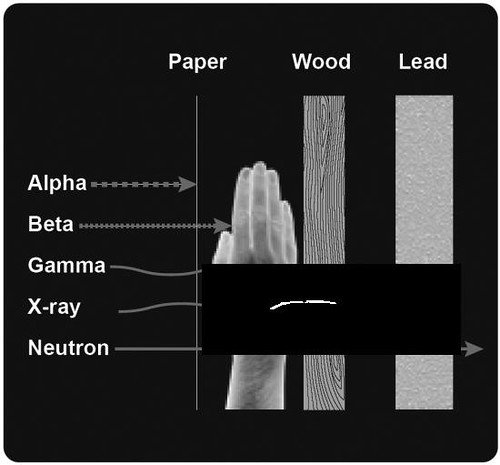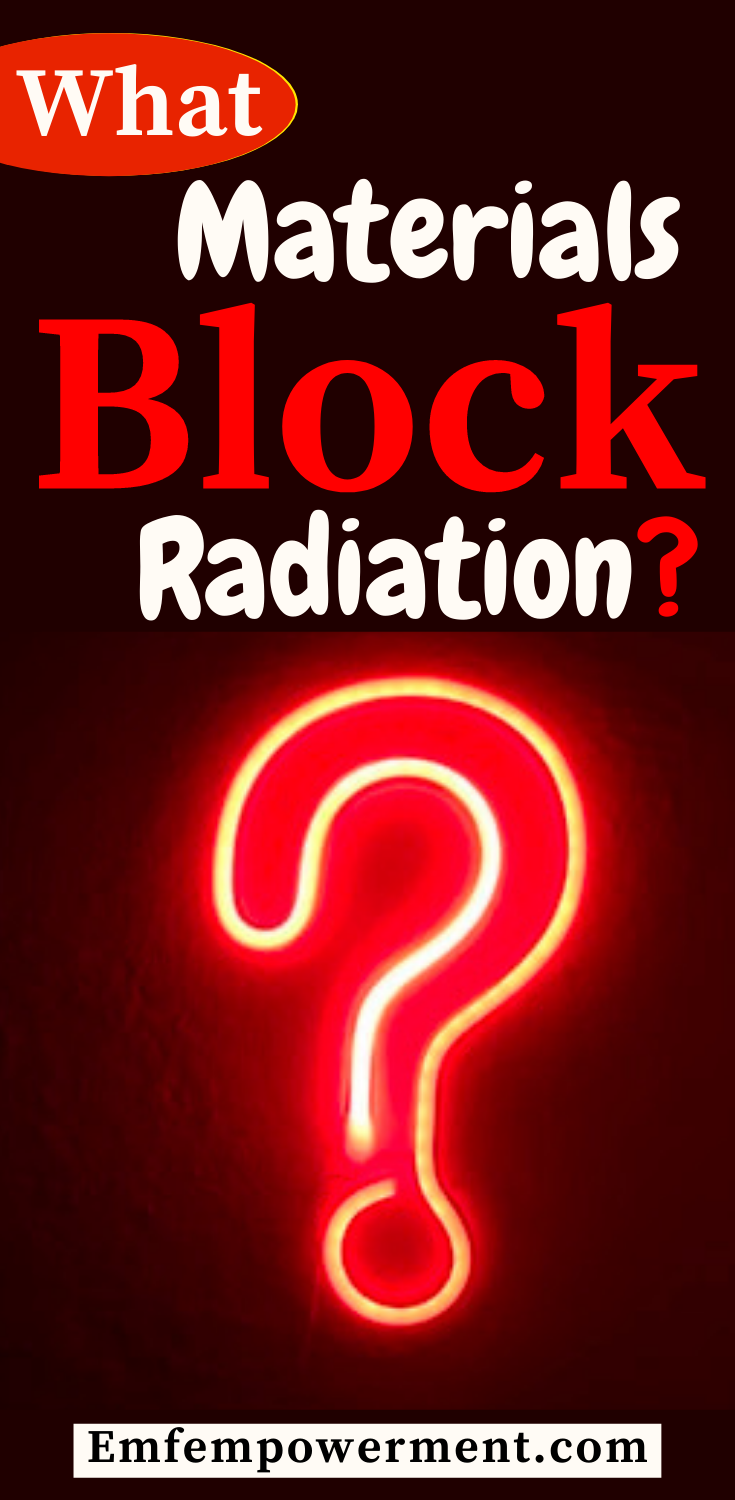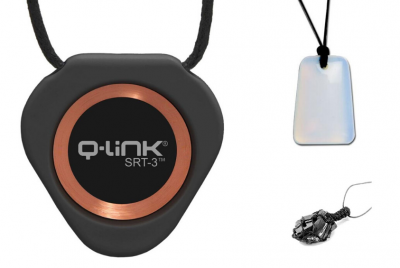When worn correctly, both Bluetooth and wired earbuds offer a lightweight and comfortable way to listen…
What Materials Block Radiation?

*We may earn a commission for purchases made using our links. Please see our disclosure to learn more.
Radiation is, in one form or another, around us constantly. From radio frequencies to cosmic rays, we can’t see or feel radiation waves, at least in the doses we are typically exposed to. In spite of that, however, they can absolutely have an effect on our health.
Depending on the type of radiation, as well as the dosage, that effect can be immediate or it can occur later down the line. Intense doses of ionizing radiation after a nuclear meltdown, for example, can result in radiation poisoning for anyone coming in close proximity with the facility, as well as cancer later in life for those who were less directly exposed. Likewise, infrequent cell phone usage likely would not yield any major health problems, but regular usage over a period of years could result in the development of a brain tumor.
Statistically speaking, the first example we brought up — the nuclear meltdown — isn’t one that you are likely to need to worry about. Rather, most exposure, regardless of the type of radiation, tends to be in relatively small doses that are most problematic when they occur frequently over time.
There are many ways you can protect yourself from various types of radiation. In this guide, we are going to focus on what types of materials are effective at blocking radiation. Depending on the type, anti-radiation materials can be hung on walls, applied to a surface, or used to create a bed canopy or blanket. To add some context, we will also briefly touch on the different types of radiation, as different materials are going to attenuate (or block) different frequencies.
What materials block radiation?
To answer that question, it is first helpful to know a little background about radiation. Radiation can be broken down into two primary types: ionizing and non-ionizing. We are going to touch on them briefly below, but if you are interested in a more thorough explanation, check out EMF Radiation: Everything You Need To Know.
Ionizing vs non-ionizing
Ionizing radiation has a lot of energy. It takes the form of waves that are very close together and tightly wound. All of that energy gives ionizing radiation the power to split an atom, and it’s the reason it is used in, say, an atomic bomb. Ionizing radiation is produced naturally by the sun and the cosmos. X-rays are another common form of ionizing radiation, frequently used in medical procedures.
Non-ionizing radiation, on the other hand, has a lot less energy. Its waves are much more spread apart and slow-moving. This type of radiation does not have enough energy to split an atom, although it can still cause heating of bodily tissue. Non-ionizing radiation takes the form of radiofrequency waves such as telecommunications signals and WiFi, microwaves, and extremely low-frequency waves used by power lines.
The distinction between ionizing and non-ionizing radiation is important for our purposes today because they fall on opposite ends of the electromagnetic spectrum. Ionizing and non-ionizing radiation encompass different frequencies. Their wavelengths look — and behave — differently. That means what blocks one type may not have as much of an effect on the other.
Materials that block ionizing radiation

“Graphic: Ionizing Radiation” by NRCgov is licensed under CC BY 2.0
When exposed to large doses of ionizing radiation, three basic steps can reduce the likelihood of lasting damage to your health. The first is that you want to minimize the amount of time you are exposed — the longer the exposure, the higher the radiation dosage. The second is to put as much distance between you and the radiation source as possible. And, lastly, you should use a protective material to shield yourself from the radiation source.
So, what materials protect against ionizing radiation?
- Dense metals. Consider when you get a dental x-ray, how the technician puts a lead vest, and sometimes even a neck collar around you. These items help block radiation from reaching sensitive areas such as the thyroid gland and reproductive organs while the x-ray is taking place. While lead is the most commonly used metal when it comes to blocking ionizing radiation, other heavy metals such as tin, tungsten, and antimony can all work, as well.
- Concrete. If you live in a community with older buildings, you may notice that some of the stronger, concrete ones are designated fallout shelters. During the Cold War, many towns established fallout shelters to protect residents in the event of a nuclear bomb. These buildings were considered safer because they were made of thick concrete that would help protect against the bomb’s ionizing radiation.
- Water. When shielding against energetic ionizing radiation waves, you need something dense. While just a thin layer of water may not meet that requirement, at greater depths water can easily attenuate most forms of ionizing radiation. Even visible light can only reach so deep.
Materials that block non-ionizing radiation
Blocking non-ionizing radiation requires a slightly different approach. Because we are frequently surrounded by non-ionizing radiation, the goal should be to lower your exposure in the areas in which you spend the most time. For many people, that means in the home.
Protective materials can be used to line walls, absorb smart meter radiation, create anti-radiation bed canopies, and in other ways, as well. There are many pre-exisitng products out there, or you can even make your own. If you decide to go the DIY route, the main consideration is really what material to use.
A few effective materials are:
- Galvanized steel. Highly conductive, galvanized steel is commonly used in EMF radiation blocking products. Essentially, galvanized steel is simply a sheet of iron or steel that is dipped in molten-hot zinc. When dried, the zinc forms a protective coating. It’s quite versatile and can be used to create a DIY smart meter cover, for example, or a cover for your WiFi router. You can find galvanized steel at most hardware stores. M-D Building Products sells 28-gauge steel in two-feet sheets, which can easily be cut into a custom size.
- Aluminum. Aluminum is another conductive metal that is frequently used in EMF protection products. It is readily available and inexpensive, making it a great choice for DIY projects. You can make covers, cases, and more using basic aluminum foil. You may very well already have some around the house. If you don’t, look for something heavy-duty such as Rhino Aluminum’s Heavy Duty Aluminum Foil Roll. This commercial-grade foil comes in a 500-foot roll that is 25 microns thick.
- Copper. A common component of EMF paint, Faraday cages, and other EMF protection products, copper is another great radiation blocking material. Like other protective metals, copper’s effectiveness comes from its high conductivity. If you are interested in making copper protective clothing or sheets, consider Amradield’s Copper Fabric, which blocks radiation from smart meters, WiFi, and other sources of RF-EMF radiation.
- AL60 Wall Shield. The AL60 is a versatile roll of protective material. It is made from 18 micron metal and is effective at blocking against RF-EMF radiation. It’s worth noting, however, that this material is effective at room temperature, so you wouldn’t want to use this outside of your home or as a smart meter case. But for indoor applications, it works quite well. After sticking AL60 to your wall with a spray adhesive, tape up the seams with aluminum tape and have a certified electrician handle the grounding. This material can also be cut to cover cables or even to create your own wallet or sleeve.
- Reflectix. We talked about aluminum above. Reflectix is essentially aluminum, times two. It comes in roll-form, is 5/16-inch thick, and consists of seven layers: two layers of aluminum foil, each surrounded by a layer of polyethylene, on the outside. On the inside, there are two layers of insulating bubbles with another layer of polyethylene in the center. The result is a material that can pretty effectively block RF-EMF radiation.
- EMF paint. If your goal of using EMF protective material is to shield a room, you may also want to consider the use of EMF paint. Essentially, this paint uses ground up conductive metals such as copper to create a coating that you apply to your wall. You usually need two coats, and you can then cover it up with whatever color of silicone-based paint you’d like. One popular brand is Yshield, whose paint is 99.995% effective after two applications. For more on EMF paint, see EMF Shielding Paint: A Quick Primer.
- EMF fabrics. For canopies and clothing, you need a softer material, and that is where EMF protective fabrics come in handy. These fabrics are often made from cotton or another fabric with interwoven copper or another conductive metal. One example is Mission Darkness’ Titan RF Faraday Fabric. For others, see the Top 10 EMF Shielding Fabrics of 2022.
Final thoughts
Anti-radiation materials can be used to lower your household’s overall radiation levels, particularly when it comes to non-ionizing EMF radiation. If you feel like you would like to do more, a good place to start would be investing in an EMF meter. These devices allow you to detect non-ionizing radiation around your home, and our guide to EMF Meters For Any Budget can allow you to find one that works for you.
Another helpful resource is our guide to Whole House EMF Protection. There, you will find tips regarding other radiation-reducing steps to take, such as switching to wired internet and installing dirty electricity filters.
Lastly, if you live in a larger area, there may be local EMF home inspectors that can help pinpoint EMF hot spots inside and around your house. These inspectors can also help you reduce your home’s overall EMF levels. To learn more, check out EMF Home Inspections: Your Complete Guide. 



